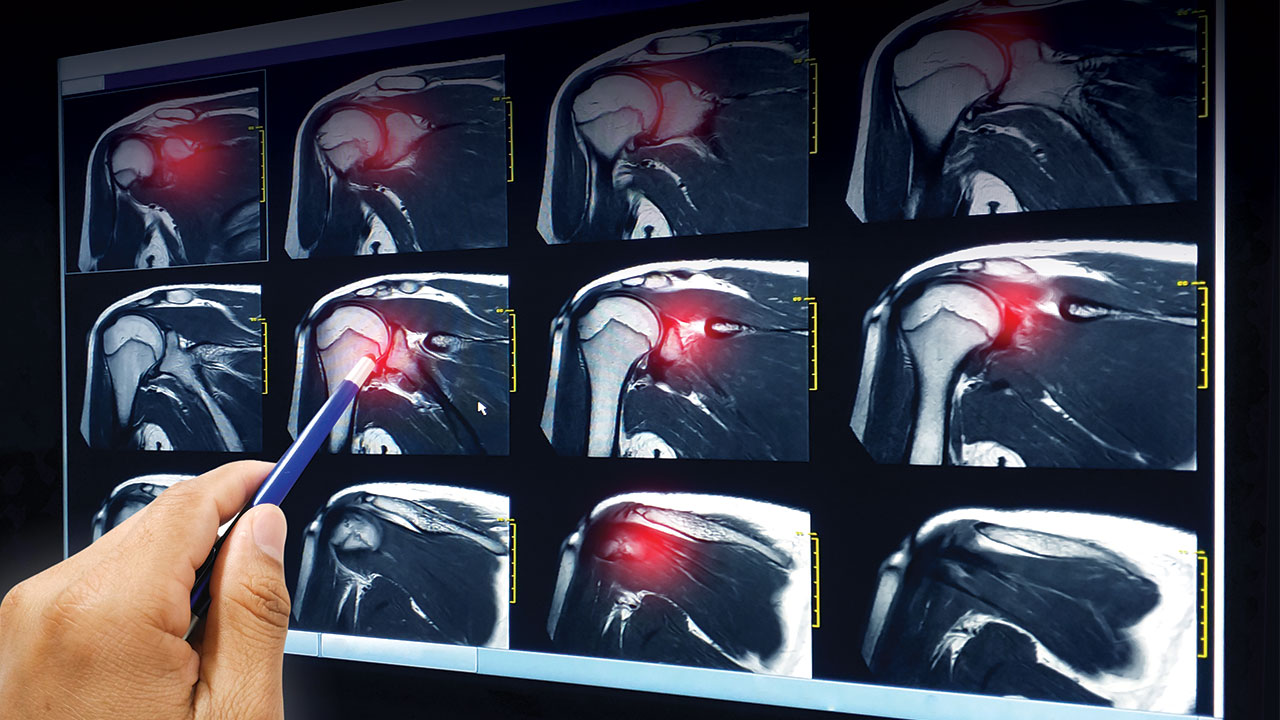
Rotator cuff tears can be difficult to treat because healing can be problematic, especially as patients increase in age, according to Manesha Lankachandra, MD, a hand and upper extremity surgeon with Englewood Orthopedic Associates, part of the Englewood Health Physician Network.
“The initial treatment for most rotator cuff tears is trying nonoperative treatments like physical therapy, anti-inflammatories and cortisone injections,” Dr. Lankachandra said. “But if those methodologies aren’t effective or stop working, then your next option is an arthroscopic surgery to repair the torn cuff.”
“The body has a really hard time healing that bone-to-tendon interface.”
Manesha Lankachandra, MD, hand and upper extremity surgeon
Fortunately, a collection of new technologies is emerging that could improve the recovery process and help patients regain function.
Repair site injections of platelet-rich plasma, an autologous blood product with an enriched platelet concentration, and mesenchymal stem cells collected from the patient’s bone marrow are two approaches being studied for their ability to support postsurgical recovery at the bone-to-tendon interface of the rotator cuff, a juncture that has a notoriously difficult healing rate.
“The body has a really hard time healing that bone-to-tendon interface,” Dr. Lankachandra explained. “The goal of these treatments is to deliver growth factors and other enzymes that are going to encourage the tendon to repair back to the bone.”
Other developing strategies to aid repair and recovery include supportive scaffolding and allografts, Dr. Lankachandra said. “In the past several years, surgeons have started using allograft tissue to augment repairs, and even using allograft in place of the rotator cuff tendon itself for tears that are too big to repair normally.”
Dr. Lankachandra, who co-authored a recent review on augmenting rotator cuff repair (Orthop Clin North Am 2019;50[1]:103-108), noted that although these emerging technologies are exciting, they remain in the early stages of development for rotator cuff repair, and more research is needed to understand how best to incorporate them into practice.
“Randomized controlled studies that show that any of these technologies are more effective than just plain repair have been pretty limited in humans,” she said. “I don’t use them that much for primary rotator cuff repair. I think their utility is more in revision cases, or in patients who have very large tears where you have a pretty good idea from the start that their rotator cuff tear will not be repairable through a standard approach.”
Posted March 11, 2021

